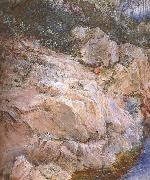Wholesale Oil Painting No Minimum |
|||||||||||
|
|
|||||||||||

|
|||||||||||
|
|
|
||||||||
John Ruskin,HRWS1819-1900 English academic and critic, who had an enormous influence not only on architectural style but on the ways in which standards of aesthetics were judged. He used an Evangelical and polemical tone in his writings that not only reached a mass audience but received the approval of the Ecclesiologists. Initially encouraged by J. C. Loudon, he contributed to some of Loudon's publications, but his key works date from the late 1840s and 1850s. The Gothic Revival was well established when Ruskin published The Seven Lamps of Architecture (1849), which was an immediate success, encapsulating the mood of the period rather than creating new ideas. He argued that architecture should be true, with no hidden structure, no veneers or finishes, and no carvings made by machines, and that Beauty in architecture was only possible if inspired by nature. As exemplars worthy of imitation (he argued that the styles known to Man were quite sufficient, and that no new style was necessary) he selected Pisan Romanesque, early Gothic of Western Italy, Venetian Gothic, and English early Second Pointed as his paradigms. In the choice of the last, the style of the late C13 and early C14, he was echoing A. W. N. Pugin's preferences as well as that of most ecclesiologically minded Gothic Revivalists such as G. G. Scott. The Stones of Venice (1851C3) helped to promote that phase of the Gothic Revival in which Continental (especially Venetian) Gothic predominated. Deane and Woodward's University Museum, Oxford (1854C60), is an example of Venetian or Ruskinian Gothic. In particular, structural polychromy, featuring colour in the material used, rather than applied, was popularized by Ruskin's writings. |
||||||||
|
|
||||||||
In the Pass of Killiecrankie (mk46)
In the Pass of Killiecrankie (mk46) Painting ID:: 25997 |
1857
Watercolour and bodycolour with pencil and ink
28.2x14.8cm
Cambridge,Fitzwilliam Museum
1857 Watercolour and bodycolour with pencil and ink 28.2x14.8cm Cambridge,Fitzwilliam Museum |
|||||||
|
CONTACT US |

